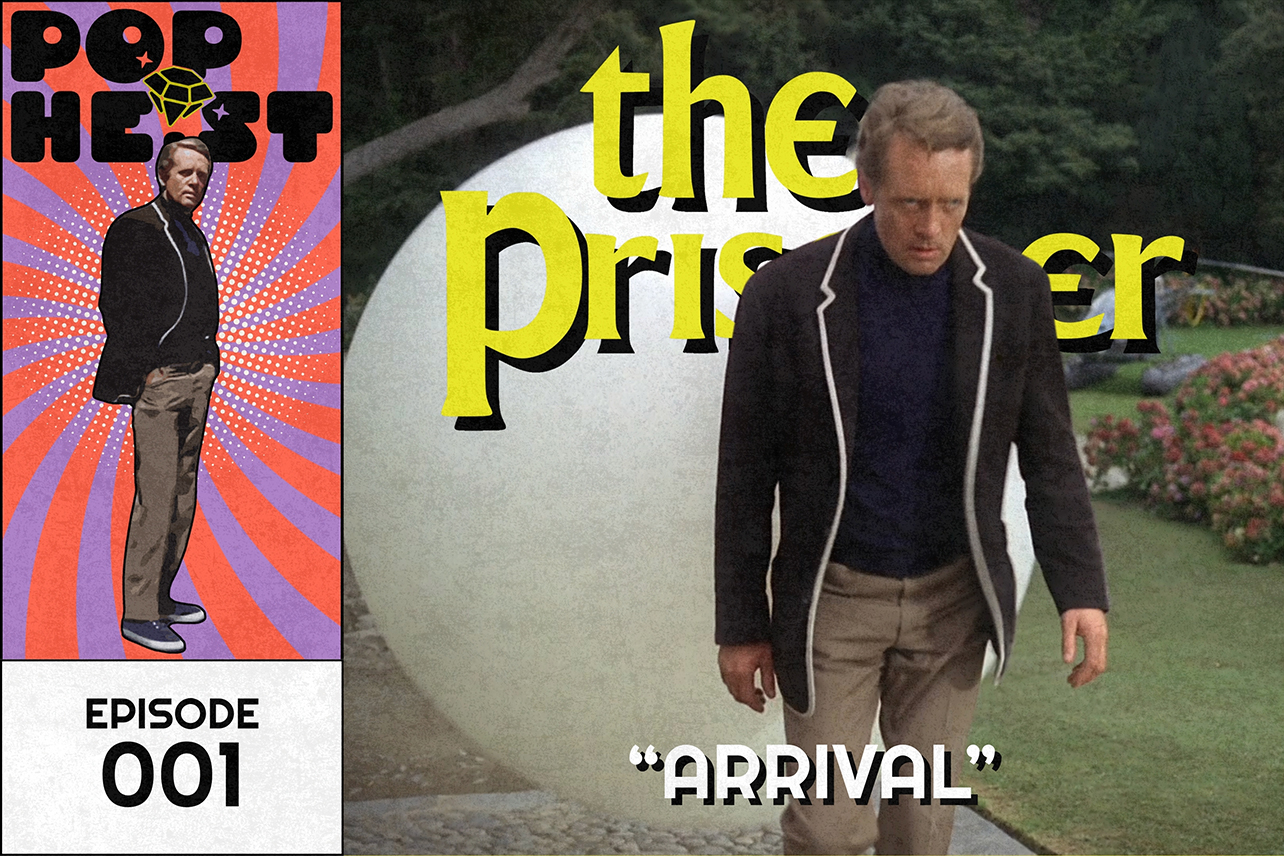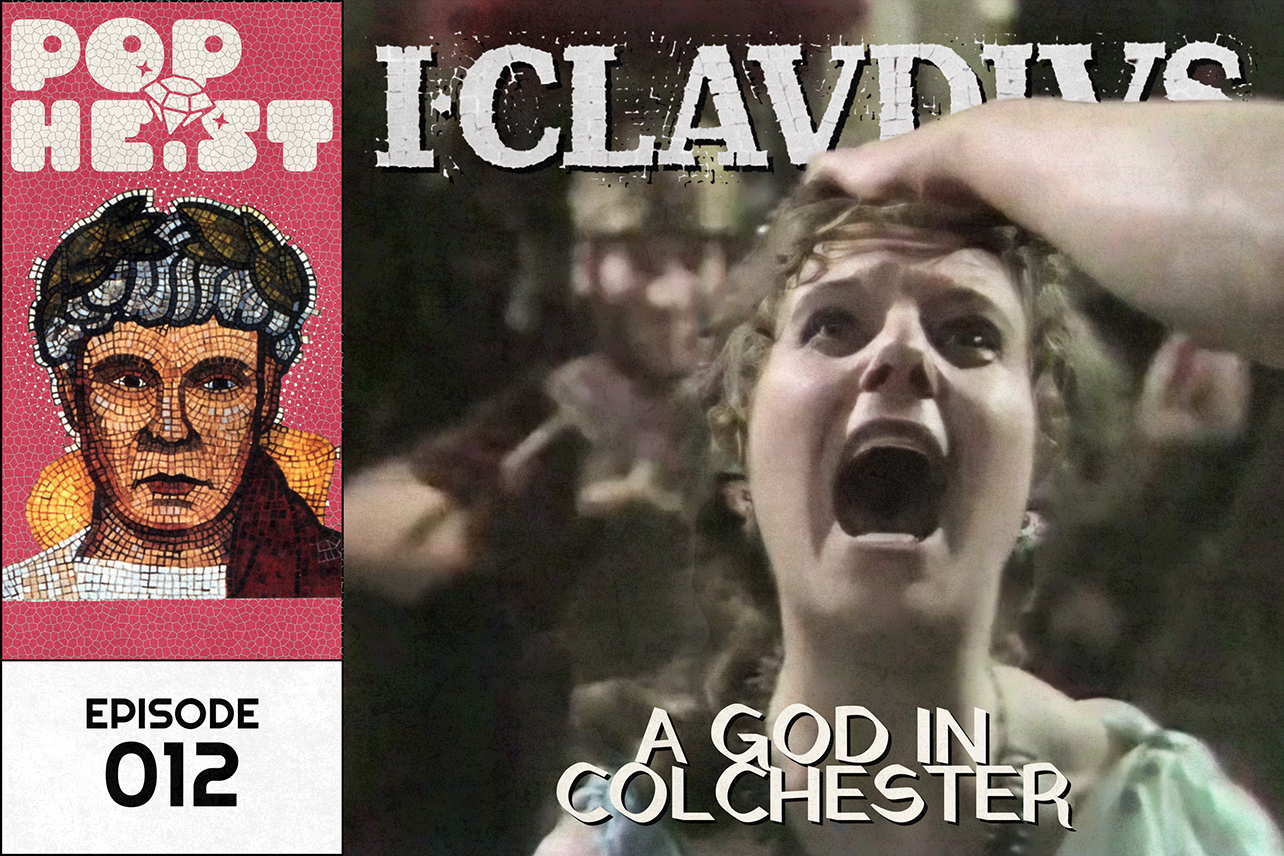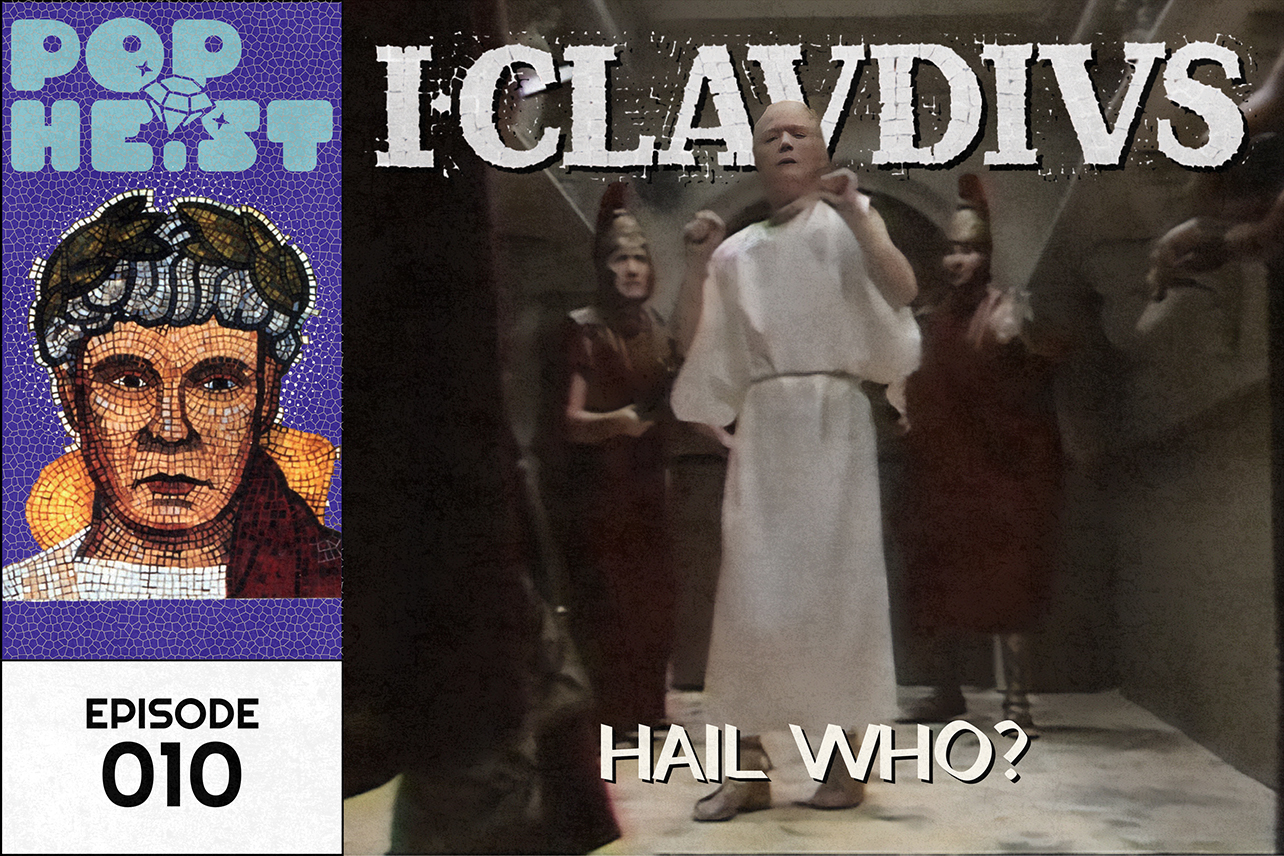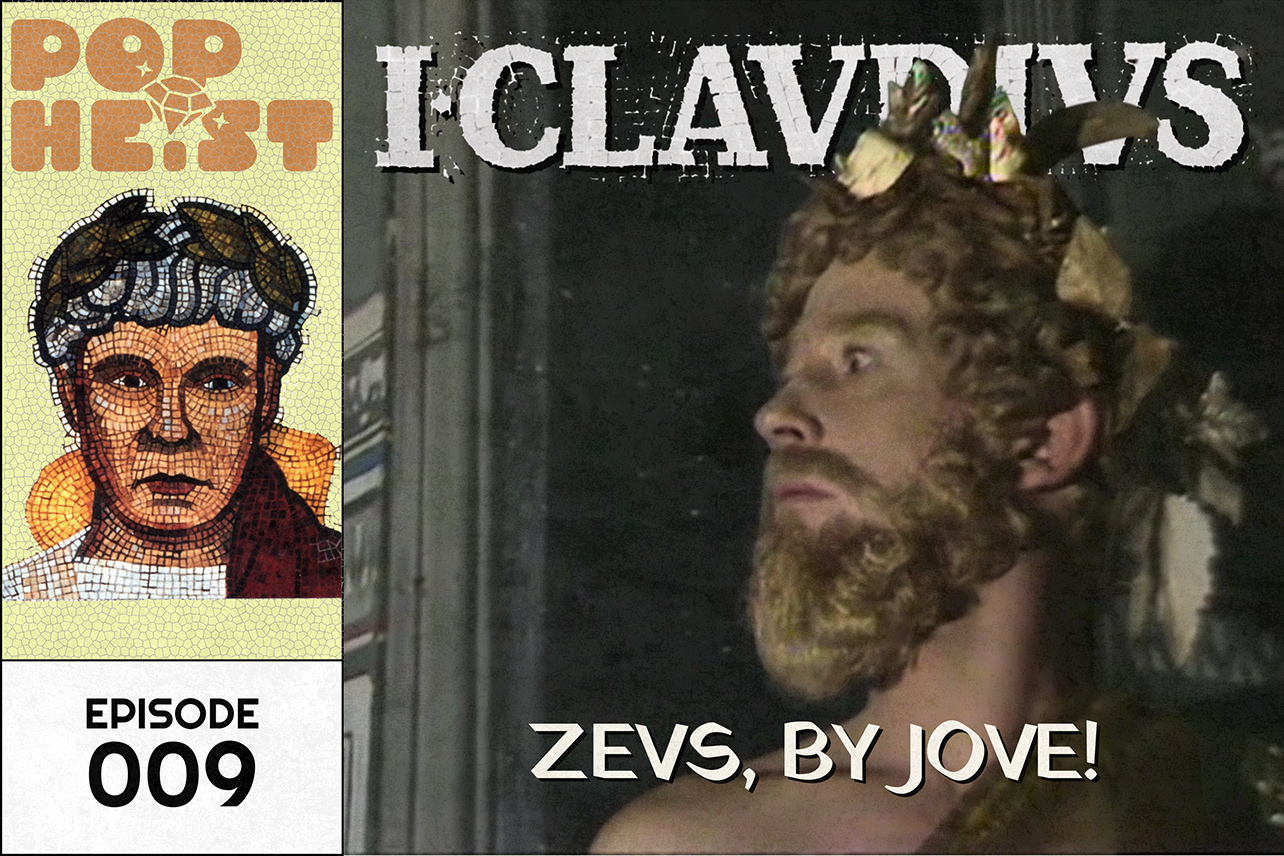In PRESTIGE PREHISTORY, Pop Heist critic Sean T. Collins takes a look at classic TV shows that paved the way for the New Golden Age of Television — challenging, self-contained stories from writers and filmmakers determined to push the medium forward by telling stories their own way.
The Prisoner Episode 1
"Arrival"
Original Airdate: Sept. 29, 1967
Writers: George Markstein, David Tomblin
Director: Don Chaffey
Cast: Patrick McGoohan, Virginia Maskell, Guy Doleman, Paul Eddington, George Baker
Fuck you. I won't do what you tell me.
A war cry of the teenage wasteland for three decades and counting, Rage Against the Machine's famously profane declaration of independence can read as a bit … adolescent. Anti-authoritarianism, we've learned to our sorrow, can easily be coopted by the enemy. When fascism came to America, it came screaming about deep state elites. Political adulthood arrives with the recognition that real rebellion comes from a place not of solitude but solidarity.
But now that fascism is here, the value of loudly refusing to submit has been proven beyond question. When you are told to kowtow to a dictator and his oligarchic backers, when you are told to dehumanize everyone who isn't a native-born cis straight rich white American man, when you are told to celebrate all the worst aspects of humanity as its best works are being dismantled — when this is what you're told to do, Fuck you, I won't do what you tell me takes on a new, collectively important and incandescent meaning.

I say all this with no intention of putting words in the mouth of Patrick McGoohan, the creator, frequent writer and director, and star of The Prisoner. An Irish American born in Astoria, Queens who spent the vast majority of his childhood in Ireland and England, McGoohan's personal small-c conservatism is the stuff of legend; on both his breakout series, the spy thriller Danger Man (known in America as Secret Agent), and The Prisoner, a show that can be seen as either a continuation of or an elaborate reaction video to Danger Man, McGoohan had a clause in his contract forbidding his participation in any kissing scenes. He was faithful to his wife, you see.
Moreover, The Prisoner arrived on British television in 1967, during one of the hottest points of the Cold War. One of the primary dilemmas facing McGoohan's character, the nameless government agent labeled Number Six in the strange Village where he has been brought to live against his will after resigning his post, is figuring out which side of the Iron Curtain said Village is on. Both McGoohan and his audience can be presumed to have a rooting interest in this question that a present-day viewer will likely not feel as keenly, or at all, for that matter.
But like many fictional explorations of Cold War paranoia, from The Manchurian Candidate to Dr. Strangelove to Tinker, Tailor, Soldier, Spy, The Prisoner is premised on the idea that our own side of the Cold War was every bit as twisted and unforgiving as our ostensible opponents in the clash between capitalism and communism. (Democracy schmemocracy. Come on. Grow up.)
The first episode of The Prisoner (every viewing order agrees on that much), "Arrival" depicts just that — the arrival of the show's unnamed title character in an eerily idyllic coastal community called the Village. That's it, just the Village. The mountains walling it off on three sides? They're just "the Mountains." The water lapping up against the beach where a stone boat lies moored in the sand? That's just "the Sea." All of its residents? None of them have names, only numbers. The Village is a utopia in the old, ironic, Greek sense: it's a no-place.

And its where our hero (?), dubbed Number Six against his will, finds himself after speeding to his unnamed intelligence agency's headquarters in his Lotus Seven hot rod and angrily submitting his resignation. All this is depicted in an extended version of the show's prologue-style opening credits sequence, one of the best in TV history. It reminds me of the opening of The Sopranos, in a way, with both Patrick McGoohan and James Gandolfini driving us to our endlessly engrossing destinations.
We learn very little of the character's reason for resigning, which winds up being the whole point of the show. Number Two (Guy Doleman), the suave and sinister chief administrator of the Village — one of two people to hold this constantly shifting designation in this episode alone — tells Number Six that he believes the agent's story that the resignation was a matter of principle. But with all the highly sensitive information floating around in Six's head, the unseen and unnamed overseers of the Village — particularly the mysterious Number One — are willing to take extraordinary measures to find out the quote-unquote truth about Six's reasoning.
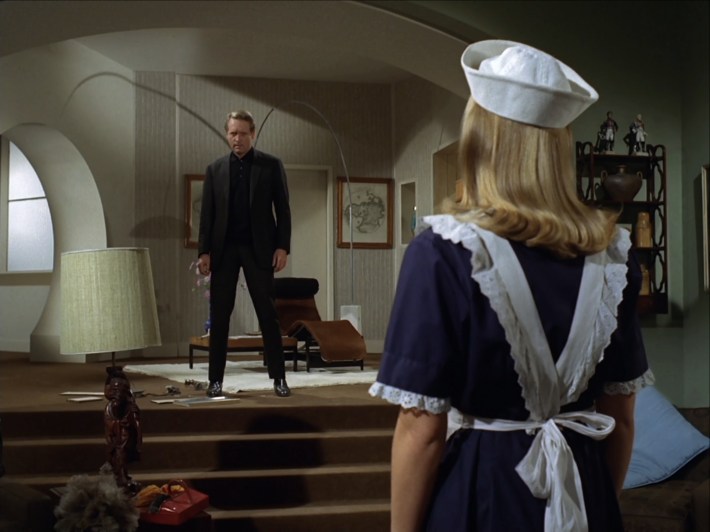
To say that this goes over poorly with Six would be like saying Walter White is, y'know, half-decent at cooking meth. A large part of Patrick McGoohan's genius in the role lies in making this international man of mystery seem literally physically uncomfortable with the idea of being under control. His movements are sharp, stiff, seemingly the result of fight-or-flight reflexes. He seems to have three settings for getting around the Village: lurk, lurch, and loom. His severity is such a stark contrast from the blissed-out geniality of the Village's seemingly brainwashed residents — they all use the odd farewell "be seeing you" when saying goodbye, which echoes the omnipresent surveillance that records Number Six both after and before his arrival in the Village — that it's often just funny to watch him walk around the place.
But hey, what would a dystopia be without a few laughs? Certainly Six himself never loses his sense of humor — a distinct echo of the RATM ethos described above.
"I suppose you're wondering what you're doing for," Number Two says to him over breakfast the morning of his arrival.
"It had crossed my mind," Six deadpans in reply.
When Two takes him up in the Village's remote-controllable helicopter to show off the beauty of the area, Six says, "I shall miss it when I'm gone." When Two brags about the Village newspaper, Six says, "You'll have to send me a copy." This freakin' guy has zero intention of sticking around, and he's wiling to crack snarky jokes about this directly to the face of the man who, as far as he knows, is directly responsible for his imprisonment in the Village in the first place.

What this pilot episode establishes, though, is that his attempts at escape can and will be undermined from every direction. From Cobb (Paul Eddington), a captured friend and fellow agent who mysteriously throws himself out his hospital windows, to Number 66 (Stephanie Randall) and Number 9 (Virginia Maskell), beautiful, desperate women who come to him with either a plea for help or a plan for escape respectively, everyone who reaches out to him as a fellow prisoner turns out to be an agent of Number Two. Six is effectively allowed to steal the helicopter, just so that the new Number Two (George Baker) can remote-control it back to the landing area and demonstrate that there is no escape.
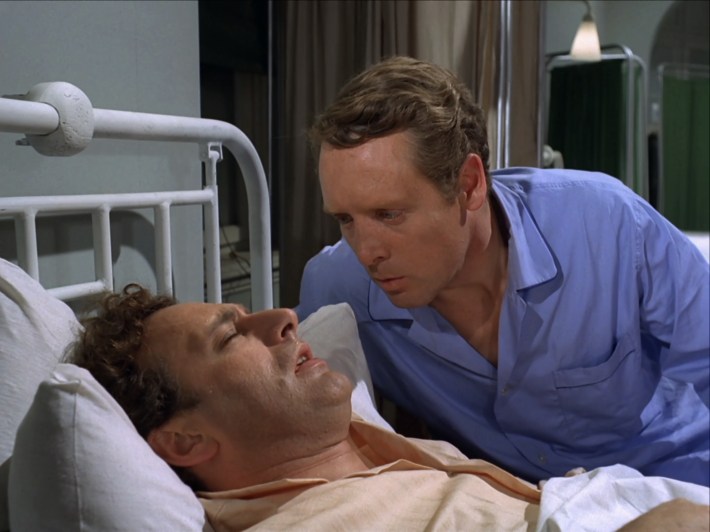
Visually, "Arrival" is enormously accomplished. With exteriors shot on location in the striking Welsh resort town of Portmeirion, the show feels immediately both idyllic and alien, as if George Orwell had tried to write 1984 but somehow came up with "Penny Lane" instead. Ominpresent signage either directs Villagers to different locations, amusement-park style, or promotes Village values in the Orwellian fashion: "A still tongue makes a happy life," say, or "Questions are a burden to others, answers a prison for oneself."
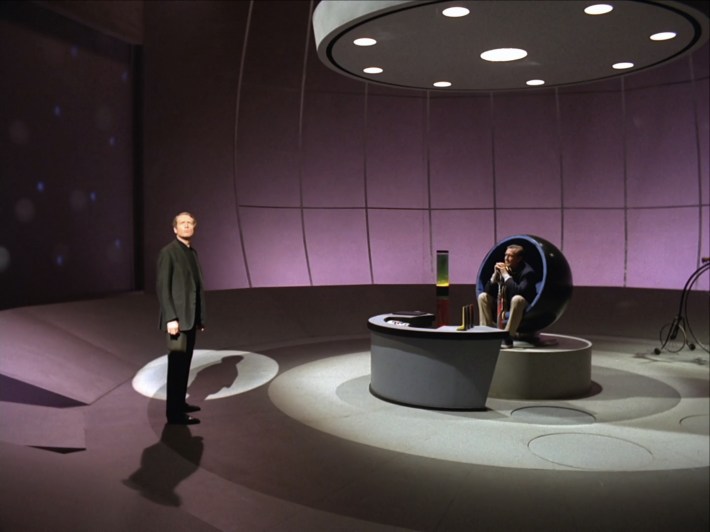
Interiors are science-fictional in that gorgeous late-1960s fashion. Sometimes this is achieved subtly: rounded passages from one room to the next, doors and walls that retract with a familiar mechanical whoosh, radios that won't turn off, omnipresent lava lamps. Other times it's achieved extravagantly: the control room where the bald and bespectacled Supervisor, Number 28 (Peter Swanwick), and his minions track Number Six's movements; Number Two's "house," the center of which is a domed throne room with chairs that emerge from the floor with the press of a button.
Against this work by art director Jack Shampan and set dresser Kenneth Bridgeman, wardrobe head Masada Wilmot tricks out the Village's docile population in a kaleidoscopic array of bold colors, with striped shirts, capes, and boater hats playing an outsize role.
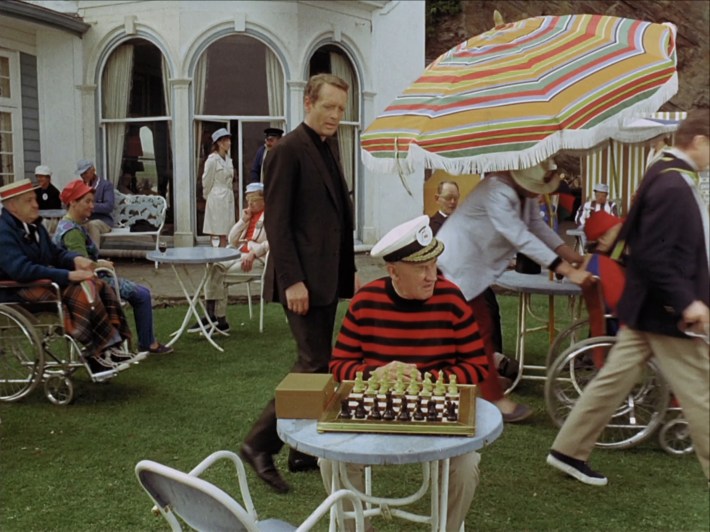
Seeing Number Six go from a classically cool Man in Black type to a properly outfitted Villager with white piping on his blazer and blue tennis shoes complementing his khakis, is an underrated sight gag. (He does get rid of his boater hat, at least.)
But the episode's most indelible visual, captured with an uncanny and unerring sense of terror by director of photography Brendan J. Stafford, goes by a single, unassuming name: Rover.
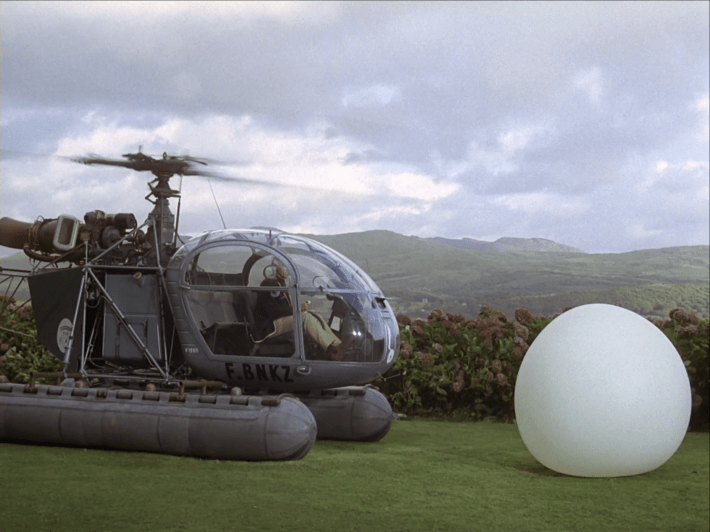
Although we haven't heard this codename used yet, this is the series' unofficial sobriquet for the shockingly frightening large white floating orb that emerges from the water to attack and subdue would-be escapees. Its first appearance, during which it assaults and absorbs a man who freaks out and runs while everybody else is frozen in place on Number Two's command, thrums with Lynchian mystery and menace.
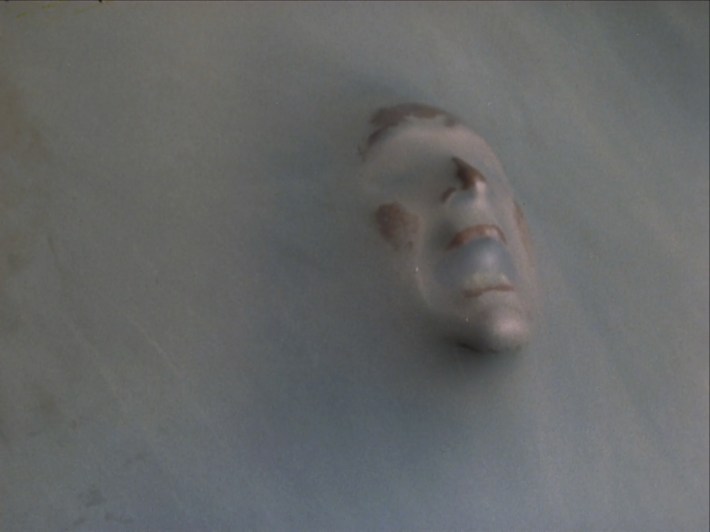
(The show also features a vaguely sinister little person, a silent butler played by Angelo Muscat, which seems like the kind of thing David Lynch and/or Mark Frost took note of when constructing Twin Peaks.)
The Prisoner can largely be credited, or blamed, for the mystery-box genre via its outsized influence on Lost, which in many ways feels like a sexier, less severe version of this show — The Prisoner: Pacific Nights, if you will. Certainly the question of who runs the Village and why they're so obsessed with Number Six is of grave concern both to the audience and Six himself.
But what I take away from this episode is not a puzzle to solve but a person to study. Here's a guy who did Her Majesty's dirty work, and apparently with enough aplomb and success to drive a preposterous sportscar. He was so good at his job of being a spy for a Western government that the Village, whoever or whatever is behind it, has dedicated its resources to cracking his brain open and seeing what's inside.
And what is his attitude towards all this? Lol yeah right, best of luck, assholes. Is he confused, is he angry, is he frightened? Oh, for sure. But he has a single conviction, and it is this:
"I will not make any deals with you. I've resigned. I will not be pushed, filed, stamped, indexed, briefed, debriefed, or numbered. My life is my own."
The most talked about and praised show of the year is Andor, Tony Gilroy's exploration of violent insurrection in the face of fascism, set in the Star Wars universe. The reason it has resonated so much with people, I think, is because its eponymous character shares this sentiment.
For all its maddening — and intentional; it serves fascists well to confuse their opponents and victims — contradictions, fascism presents us with a straightforward proposition: We are human only to the extent that we fit the regime's perpetually constricting definition of who is human. Resisting fascism is in large part a matter of personal integrity: My words will match my thoughts, my actions will match my words, I will be the person I am and not the servant they want me to become, I will not betray my soul. Number Six, who in this episode gives Patrick McGoohan's birthdate as his own down to the minute, will not go along with any of this either. He's not the machine-man with a mind of gray sludge that Number Two and his masters want him to be. He is a human. He is not a number. He is a free man.
So are you.
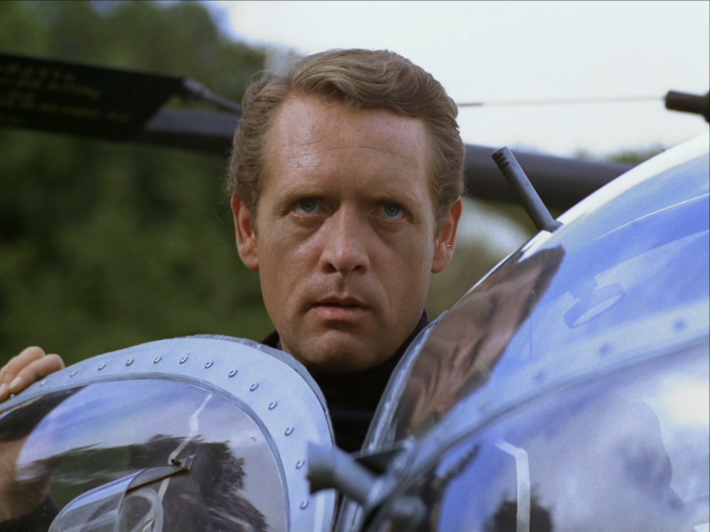
Finally, a VERY IMPORTANT NOTE. The Prisoner's 17 episodes aired in a different order from that in which they were shot, and the broad consensus is that neither is the proper order in which to watch the story unfold at any rate. From American public television to the Prisoner fan club, several alternate viewing orders have been suggested and used by both the show's fans and curious newcomers alike.
For these reviews, we'll be using the the AV Club order, which you can find by at this link. (Actually that takes you to a super-handy page where with you can re-order the eps with a click according to various suggested viewing sequences. Check it out!)
This running order was developed by former AV Club critic Zack Handlen in the course of covering the show. "It's the order that makes the most narrative/character arc sense to me," Handlen told me. "It starts with episodes where Six is confused and doesn't understand the parameters of his situation; goes on with episodes where he tries, and fails, to escape; finally shifting to the episodes where he's actually beating the Village at its own game, which leads naturally into 'Fall Out,'" the series finale.
Fittingly, the choose-your-own-adventure nature of The Prisoner's running order meshes well with the show's themes. To start watching The Prisoner is a lot like suddenly being deposited in its strange, isolated Village: Fighting your way through its disorienting nature is the key.
This recap was originally accessible to paid subscribers only, and future recaps in this series are available now for paid subscribers. If you haven't already, consider supporting worker-owned media by subscribing to Pop Heist. We are ad-free and operating outside the algorithm, so all dollars go directly to paying the staff members and writers who make articles like this one possible.
